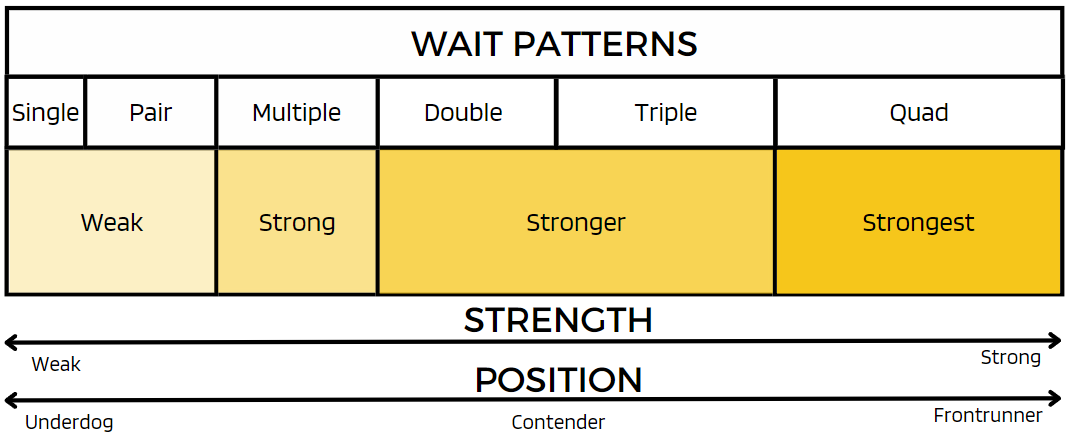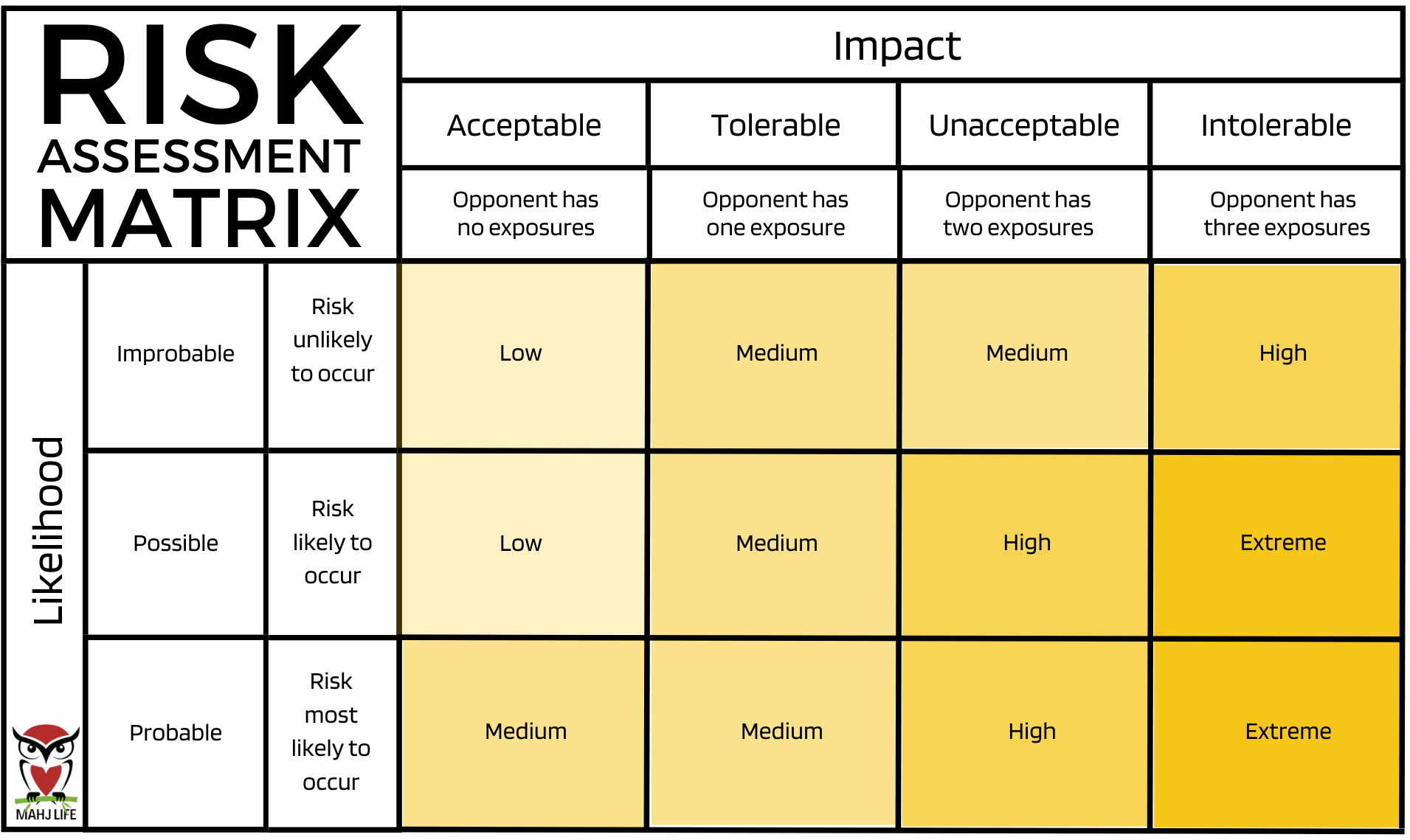How Can We Help?
WHY WAIT PATTERNS MATTER (ARTICLE 225)
A wait pattern is where one tile is missing to complete a hand with one or more blocks.
- Single: Need a tile needed to fill a gap that would complete the hand
- Pair: Need one tile for a pair that would complete the hand
- Multiple: Need one tile or joker that can be used in a multiple that would complete the hand
- Double: Need one of two tiles or a joker that can be used in a multiple that would complete the hand
- Triple: Need one of three tiles or a joker that can be used in a multiple that would complete the hand
- Quad: Need one of four tiles or a joker that can be used in a multiple that would complete the hand
Whatever hand you are playing, look for opportunities to increase the strength of your wait.

When you are ready to win, adjust your position based on the strength of your wait. If your wait is strong, bump up to the next position, and if your wait is weak, bump back. To determine your position, consider these variables:
- Underdog: Back or weak position in the game based on the strength of the hand, number of discards in the hand, number of discards visible, and number of picks left in the wall.
- Contender: Middle or moderate position in the game based on the strength of the hand, number of discards in the hand, number of discards visible, and number of picks left in the wall.
- Frontrunner: Front or strong position in the game based on the strength of the hand, number of discards in the hand, number of discards visible, and number of picks left in the wall.
Consider your position in the game and your wait pattern as you assess the risk with each pick from the wall. Reassess if you draw a tile that could give another player a winning hand. Here is a Risk Matrix to help you with push-fold judgment.

Account for three tiles in discards or exposures and consider the availability of jokers.
| PUSH JUDGMENT | FOLD JUDGMENT | |
| If you think your winning tile is in the wall or an opponent may discard it, push to win. Discard the riskiest tile first. | If you think the potential of getting your winning tile is slim, fold. Keep risky tiles, break up your ready or near-ready hand, and discard as safely as possible to force a draw (i.e., wall game). Do not claim discards for exposure—it gives other players valuable information. Discard tiles that have been exposed or previously discarded; it’s best to discard number tiles where 3 are out (except Year tiles). Discard jokers (jokers cannot be claimed). | |
| If you think your winning tile is in the wall or it may be discarded by an opponent, push to win. Discard the riskiest tile first. |
Wait pattern examples from the current National Mah Jongg League card:






These concepts are detailed in the American Mah Jongg Primer Volume 2, Essential Skills and Powerful Strategies You Need to Optimize Your Winning Potential
